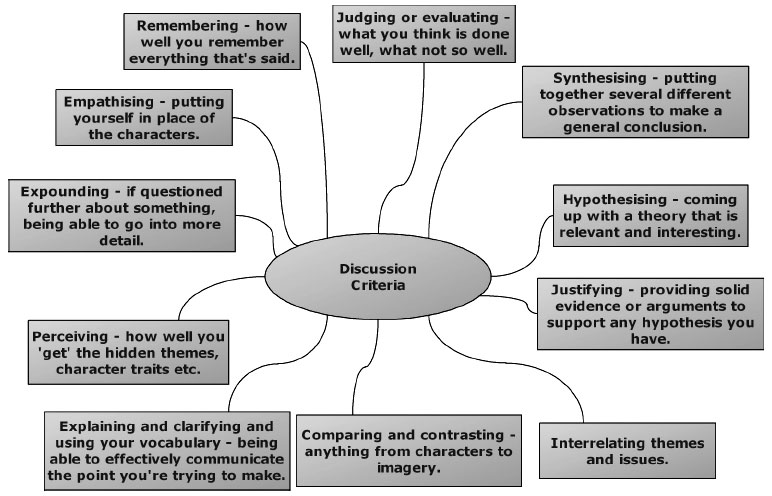Level of prompting
Informal discussions can range hugely in how much prompting you get from the person running the discussion.

Completely structured discussions usually follow a question-answer-question-answer format. The teacher asks a question, you give an answer as best you can, then they ask the next question, and so on. This sort of structure suits people who aren’t naturally sure of themselves, since they get regular breaks each time a question is asked, and they don’t have to carry the discussion themselves.
Free flow discussions usually start with a single question, and flow freely from there. Sometimes the answer to the first question will prompt a further question, which can then be answered in turn. For instance (the Sioux were a large American Indian tribe):
|
Teacher: |
So what did you think of the book, North Against the Sioux? |
|
Student: |
I really enjoyed it; I thought it gave a very fair but accurate portrayal of the Indian Wars of the 1860s. |
|
Teacher: |
By fair, you mean it explained both sides of the story? |
|
Student: |
Yes, the author tries to portray the good and bad aspects of both the Indians and the white men. For instance, there is a description of soldiers massacring a peaceful Indian settlement, showing the horrible atrocities that could be committed by the settlers. However, the author doesn’t fall into the stance that the Indians were all perfect and could do no wrong - he describes some unprovoked acts of atrocity committed by them as well... |
The discussion then flows with this free flow of questions and answers.
If you really know the topic, or you feel that the teacher isn’t asking you enough questions to let you ‘show off’ your knowledge and perceptiveness, you can use your own answers to lead on to others. For instance:
|
Teacher: |
How do you think the main character, Portugee Phillips, is portrayed? |
|
Student: |
He’s definitely portrayed as the hero of the story - the rugged, kindly scout who volunteers for all the dangerous missions. |
This is a fine, brief answer, but perhaps your teacher isn’t asking you enough questions, or you really want to give your opinion on what the author could have done better:
|
Teacher: |
How do you think the main character, Portugee Phillips, is portrayed? |
|
Student: |
He’s definitely portrayed as the hero of the story - the rugged, kindly scout who volunteers for all the dangerous missions. However, while we get a feel for him as a quietly heroic character as the story develops, we don’t get much beyond that. There’s no further personal development - we don’t hear of any women, either in the present or past. Even without that though, you’d expect some personality to be revealed through his interaction with other characters in the story, for instance with Jim Bridger or Sargent Haggerty. But instead, the author really only uses characters as a mechanism through which he can give more background on the story and the lives of the soldiers in general. I would have liked to have seen some more personal development, perhaps a hint of some tragedy in Portugee’s past, or a recurring theme of an unfulfilled dream... |
Here I transition from a straight-out answer to the question into giving my opinion on something I think the author should have done, and I even suggest ways he could have done it.
Here is a mind map of some of the general criteria you should try to meet during your discussion. When you’re preparing and practicing for the discussion, keep these in mind.

This is the end of the chapter. Click here to return to the main topic list